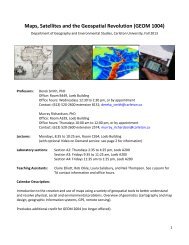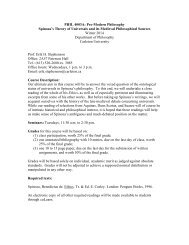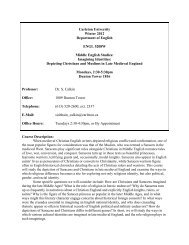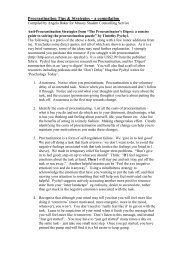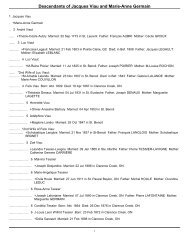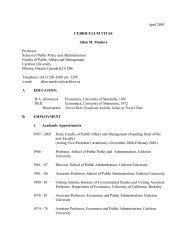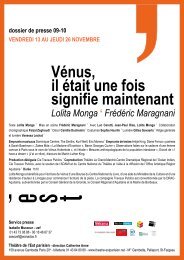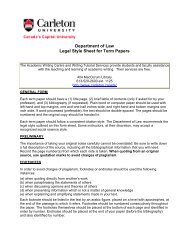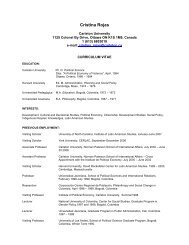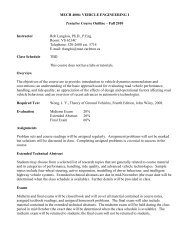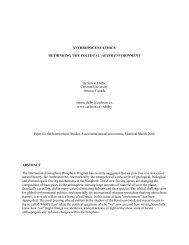Identifying Speculative Bubbles with an Infinite Hidden Markov Model
Identifying Speculative Bubbles with an Infinite Hidden Markov Model
Identifying Speculative Bubbles with an Infinite Hidden Markov Model
You also want an ePaper? Increase the reach of your titles
YUMPU automatically turns print PDFs into web optimized ePapers that Google loves.
dynamic is similar to to the periodically collapsing process of Ev<strong>an</strong>s (1991), while the MS2finds no sign of bubble collapse. Lastly, the iHMM finds evidence of bubble existence inthe consumer price throughout the whole sample period, whereas the MS2 suggests that theexplosive behaviors only appear for two short periods starting in June 1985 <strong>an</strong>d July 1989,respectively.We use the predictive likelihood as the criterion for model comparison. It is based onprediction <strong>an</strong>d acts as the Ockham’s razor by automatically punishing overparametrization.The results show that the two-regime specification is as good as the iHMM for the money base.However, for the exch<strong>an</strong>ge rate <strong>an</strong>d the consumer price, the predictive likelihood stronglysupports the iHMM against the MS2. Hence, the results found by the iHMM is more crediblefrom the statistical point of view. We find the explosive money growth in June 1985 did nottrigger signific<strong>an</strong>t ch<strong>an</strong>ge of dynamics for the exch<strong>an</strong>ge rate <strong>an</strong>d consumer price. On the otherh<strong>an</strong>d, the explosive growth of the money base in July 1989 is associated <strong>with</strong> both the exch<strong>an</strong>gerate <strong>an</strong>d the consumer price switching to explosive dynamic regimes.The second application is to U.S. oil price from April 1983 to December 2010. The oilinventory is used as a proxy to the market fundamental. According to the predictive likelihoods,the iHMM fits the oil price better th<strong>an</strong> the MS2. The iHMM suggests that there exist mildbubbles in the oil price during most of the sample period <strong>with</strong> four major bubble collapsingperiods following the 1985 oil price war, the first Persi<strong>an</strong> Gulf War, the 1998 Asi<strong>an</strong> fin<strong>an</strong>cialcrisis <strong>an</strong>d the subprime mortgage crisis. On the other h<strong>an</strong>d, no explosive dynamic is discoveredin the oil inventory data.The rest of the paper is org<strong>an</strong>ized as follows. Section 2 introduces the infinite hidden<strong>Markov</strong> model. The estimation procedure, along <strong>with</strong> the dating algorithm of bubbles <strong>an</strong>dthe model comparison method, are described in Section 3. The application to the Argentinahyperinflation period <strong>an</strong>d the U.S oil price are in Section 4 <strong>an</strong>d Section 5. Section 6 concludesthe paper.5



